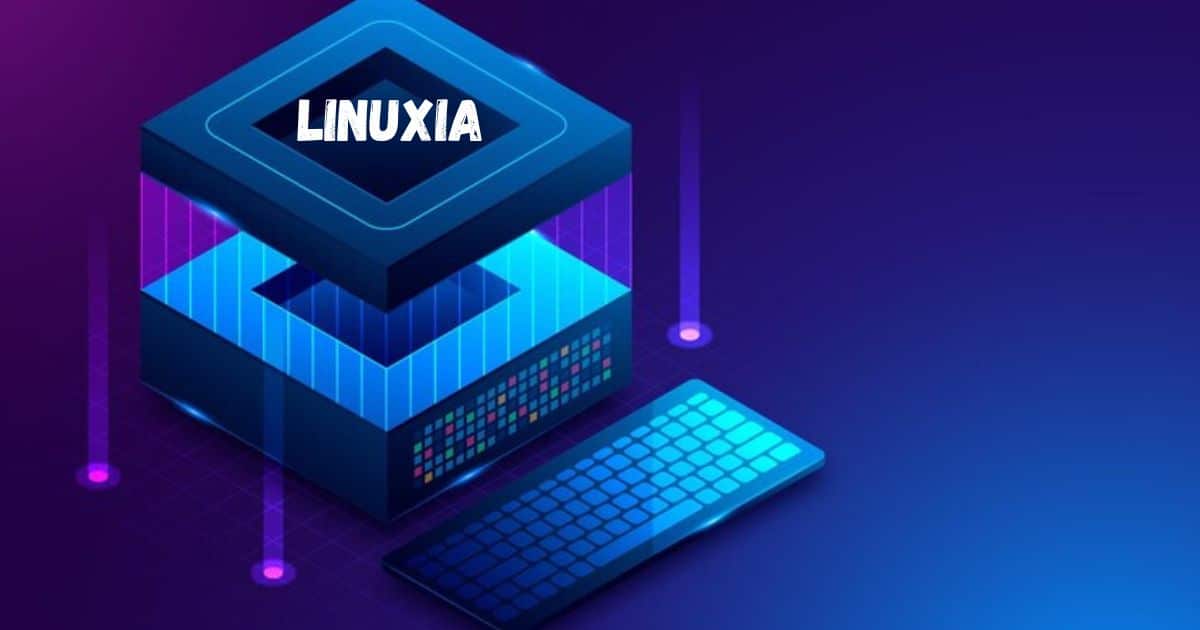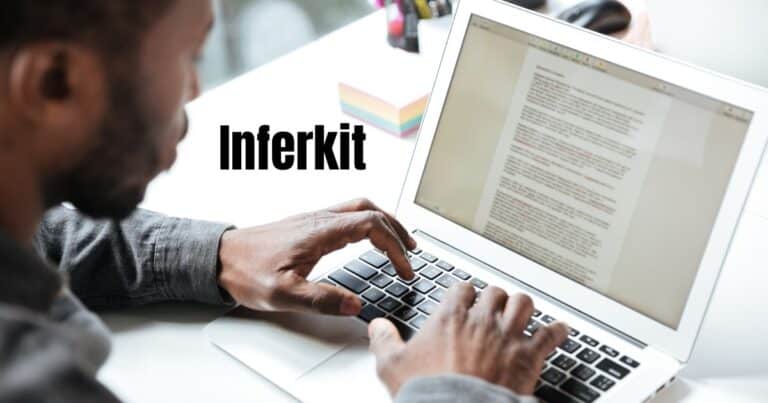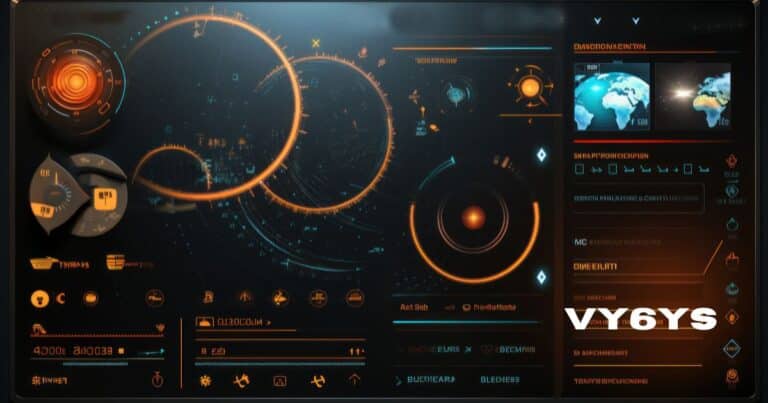Introduction
Linuxia, a revolutionary concept encompassing the expansive realm of Linux distributions, marks an exploration into the world of open-source computing. In contrast to closed-source systems like Windows or macOS, Linuxia presents a rich landscape of customizable and free alternatives. The foundation rests on the Linux kernel, an open-source software core initially created by Linus Torvalds in 1991. What makes Linuxia stand out from other operating systems, and why should you consider this technological adventure?
Understanding the Basics of Linux
Fundamentally, Linuxia embodies the principles of openness, community collaboration, and technological advancement. Unlike proprietary platforms, Linux distributions (commonly called “distros”) are accessible to everyone for use, modification, and sharing. This open philosophy has fostered a dynamic ecosystem of developers, enthusiasts, and users who actively participate in its evolution.
What Sets Linux Apart?
Linuxia’s distinctive features include its modularity, enhanced security, and adaptability. The modular architecture enables users to personalize their computing environment, from selecting desktop interfaces to choosing software applications. Furthermore, Linuxia is celebrated for its robust security infrastructure, featuring comprehensive tools for user access control, firewall protection, and data encryption. Its versatility is demonstrated through its widespread adoption across various platforms, from server systems and personal computers to mobile devices and embedded technology.
Getting Started with Linuxia
Before embarking on your Linuxia journey, it’s crucial to identify the distribution that best matches your requirements and expertise level.
Choosing the Right Distribution
Linuxia encompasses numerous distributions designed for various purposes, ranging from user-friendly options for newcomers to specialized versions for gaming, content creation, or system management.
Popular Linux Distributions
- Ubuntu: Recognized for its intuitive interface and robust community backing, Ubuntu remains a top choice for newcomers.
- Debian: Celebrated for its unwavering stability and commitment to open-source values, Debian forms the basis for numerous other distributions.
- Fedora: Incorporating the latest technological innovations, Fedora appeals to users seeking cutting-edge software developments.
- Arch Linux: Designed for advanced users, Arch Linux emphasizes minimalism and extensive customization options.
Factors to Consider
When choosing a distribution, evaluate aspects such as hardware requirements, software ecosystem, and community resources. Consider whether you prefer continuous updates through a rolling release model or scheduled updates via a fixed release approach.
Installing Linuxia
After selecting your preferred distribution, proceed with installing Linuxia on your computer. While installation procedures vary among distributions, most offer intuitive installation interfaces to facilitate the setup process.
Step-by-Step Installation Guide
A comprehensive, easy-to-follow guide that walks you through each stage of the installation process.
Prepare Installation Media
Begin by downloading the ISO file of your selected distribution from its official website. Create a bootable USB drive or DVD using dedicated software tools designed for this purpose.
Boot from Installation Media
Insert your prepared installation media into your computer’s appropriate port or drive. Access the boot menu and select the installation media as your boot device.
Follow Installation Wizard
Navigate through the installation wizard’s comprehensive setup process. This includes selecting your preferred language, setting your timezone, configuring disk partitioning options, and establishing a user account with appropriate credentials.
Complete Installation
After the installation process concludes, remove the installation media and restart your system. Your new Linuxia environment will be ready for exploration upon reboot.
Troubleshooting Tips
Should you encounter any technical difficulties during installation, refer to your distribution’s official documentation or seek guidance from the active Linuxia community through forums and support channels.
Exploring the Linuxia Environment
With Linuxia successfully installed, it’s time to discover the powerful features and functionality of your new operating system.
Navigating the Command Line Interface
While Linuxia distributions provide modern graphical interfaces comparable to traditional operating systems, mastering the command line interface (CLI) remains crucial for advanced system management and administration.
Basic Commands
- ls: Display directory contents and file listings.
- cd: Navigate between directories.
- mkdir: Generate new directories.
- rm: Delete files or directories.
- cp: Duplicate files or directories.
Intermediate Commands
- grep: Search text patterns within files.
- find: Locate specific files and directories.
- chmod: Modify file access permissions.
- tar: Handle compressed archive files.
- ssh: Establish secure remote connections.
Understanding File Systems
Linuxia implements a hierarchical file structure, with the root directory (“/”) serving as the foundation for all system directories.
File System Hierarchy
- /bin: Core system executables.
- /etc: System-wide configuration files.
- /home: Personal user directories.
- /var: Variable system data.
- /usr: User applications and libraries.
Managing Files and Directories
Linuxia offers comprehensive tools for efficient file management, enabling operations like copying, moving, renaming, and removal.
Customizing Your Linuxia Experience
Linuxia’s exceptional flexibility allows extensive customization to create your ideal computing environment.
Desktop Environments
Choose from various desktop environments, including GNOME, KDE, XFCE, and LXQt, each offering distinct features and interfaces.
Themes and Extensions
Enhance your desktop environment with customizable themes and extensions, ranging from modern minimalist designs to rich, feature-packed layouts.
Unlocking the Power of Linuxia
Beyond its user-friendly interface and customization options, Linuxia provides powerful tools for productivity, development, and system administration.
Software Management
Software management in Linuxia is streamlined through package managers, facilitating easy installation, updates, and removal of applications.
Package Managers
A comprehensive, easy-to-follow guide that walks you through each stage of the installation process.
APT (Advanced Package Tool):
The primary package management system utilized by Debian-based distributions, including Ubuntu, offering streamlined software handling capabilities.
DNF (Dandified Yum):
The next-generation package manager powering Fedora and Red Hat-based distributions, providing enhanced dependency resolution.
Pacman:
The lightweight yet powerful package management utility specifically designed for Arch Linux and its derivative distributions.
Installing and Removing Software
Package managers simplify software management by enabling installation through straightforward commands, exemplified by the syntax sudo apt install package_name, making software deployment effortless.
Security Features
Linuxia incorporates comprehensive security mechanisms designed to safeguard your system against various threats, unauthorized access attempts, and potential vulnerabilities.
User Permissions
The operating system implements a sophisticated permission framework to regulate access to system resources and files, ensuring precise control over user privileges and system security.
Firewalls and Antivirus
Integrated security tools, including robust firewalls and antivirus solutions, create multiple defensive layers against network-based threats and malicious software.
Networking in Linuxia
Network configuration and management in Linuxia is intuitive, featuring comprehensive tools for both wireless and wired connectivity options.
Setting Up Networking
Manage network interfaces, IP address allocation, and network services efficiently using powerful utilities such as ifconfig, ip, and systemctl.
Network Tools
The system includes essential networking utilities for connection diagnostics and monitoring, featuring tools like ping, traceroute, and netstat.
Advanced Topics in Linuxia
Advanced users can explore deeper system functionalities and sophisticated features within Linuxia’s extensive ecosystem.
Shell Scripting
Shell scripting provides powerful automation capabilities, enabling users to enhance their workflow efficiency significantly.
Automation and Scripting Basics
Master shell script creation using bash or alternative scripting languages to automate routine tasks, including system maintenance, backup procedures, and software deployment.
Examples and Use Cases
Discover practical applications of shell scripting, ranging from simple command automation to complex system administration scripts and data manipulation tools.
Server Administration
Linuxia serves as a preferred server platform, supporting a substantial portion of global internet infrastructure.
Setting Up a Linux Server
Explore server configuration for various applications, including web hosting, file sharing, database management, and essential network services configuration.
Web Hosting with Linuxia
Master web hosting fundamentals, including web server configuration (Apache/Nginx), database implementation (MySQL/PostgreSQL), and security enhancement through SSL certification and firewall configuration.
Linuxia for Development
The platform offers an ideal development environment with comprehensive tool support and extensive library availability.
Programming Tools
Access a wide range of programming languages including Python, C/C++, Java, and Ruby, complemented by powerful development environments like Visual Studio Code, Emacs, and Vim.
Version Control Systems
Master the implementation of version control systems such as Git to efficiently manage and collaborate on software development projects. Gain proficiency in fundamental Git operations including versioning, branch management, merge procedures, and collaborative workflows through platforms such as GitHub or GitLab.
Troubleshooting and Support
While Linuxia demonstrates exceptional stability, users may occasionally encounter technical challenges. Understanding troubleshooting methodologies and support resources is essential for maintaining optimal system performance.
Common Issues and Solutions
Discover solutions to frequently encountered Linuxia challenges, including hardware compatibility concerns, software conflicts, and performance optimization. Master diagnostic tools and troubleshooting approaches to effectively identify and resolve system issues.
Community Resources
The cornerstone of Linuxia’s success lies in its dynamic community of users and developers, who actively contribute their expertise and support to fellow enthusiasts.
Forums and Online Communities
Engage with diverse online platforms, discussion forums, and social media groups dedicated to Linuxia for guidance, experience sharing, and networking opportunities. Key platforms include Reddit’s r/Linux community, Ubuntu Forums, and Stack Exchange.
Official Documentation
Utilize comprehensive official documentation and user guides maintained by distribution developers and open-source projects. These valuable resources provide detailed insights into installation procedures, system configuration, troubleshooting protocols, and recommended practices for Linuxia usage.
Conclusion
The journey into Linuxia transcends mere operating system adoption; it represents an adventure in technological exploration, skill development, and personal empowerment. Whether you’re a newcomer seeking alternatives to conventional operating systems or an experienced professional aiming to maximize open-source computing potential, Linuxia presents limitless opportunities. By choosing Linuxia, you become part of a worldwide community of innovators actively shaping technological advancement.
ALSO READ: Geöe
FAQs
Is Linuxia difficult to learn for beginners?
While Linuxia presents an initial learning curve, extensive online resources, tutorials, and community support facilitate smooth onboarding for newcomers.
Can I run Windows software on Linuxia?
Though direct Windows software compatibility may be limited, solutions exist through compatibility layers and virtualization technologies.
What are the benefits of choosing Linuxia over other operating systems?
Linuxia delivers enhanced customization capabilities, robust security features, and superior flexibility compared to proprietary alternatives.
How often are updates released for Linuxia?
Update frequencies vary by distribution but generally maintain consistent schedules for security patches, bug fixes, and feature enhancements.
Is Linuxia suitable for gaming?
Gaming support on Linuxia has improved significantly, especially through platforms like Steam, though individual game compatibility may vary.





